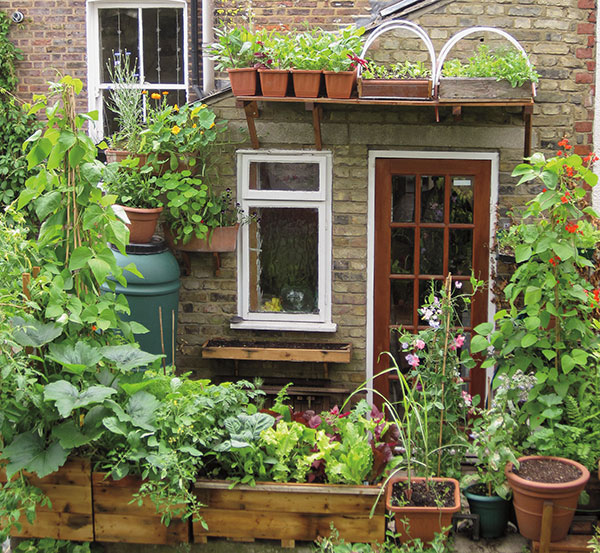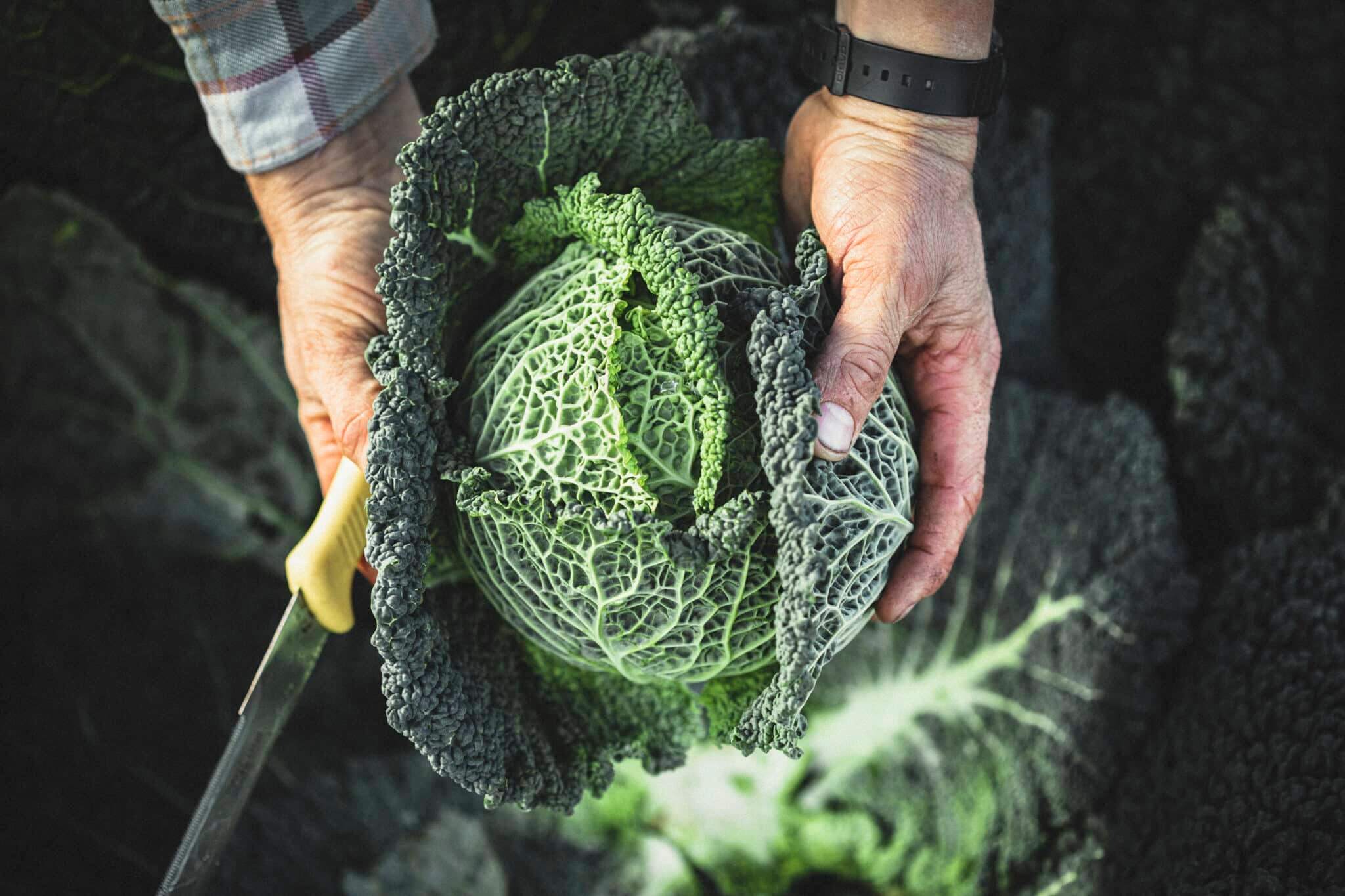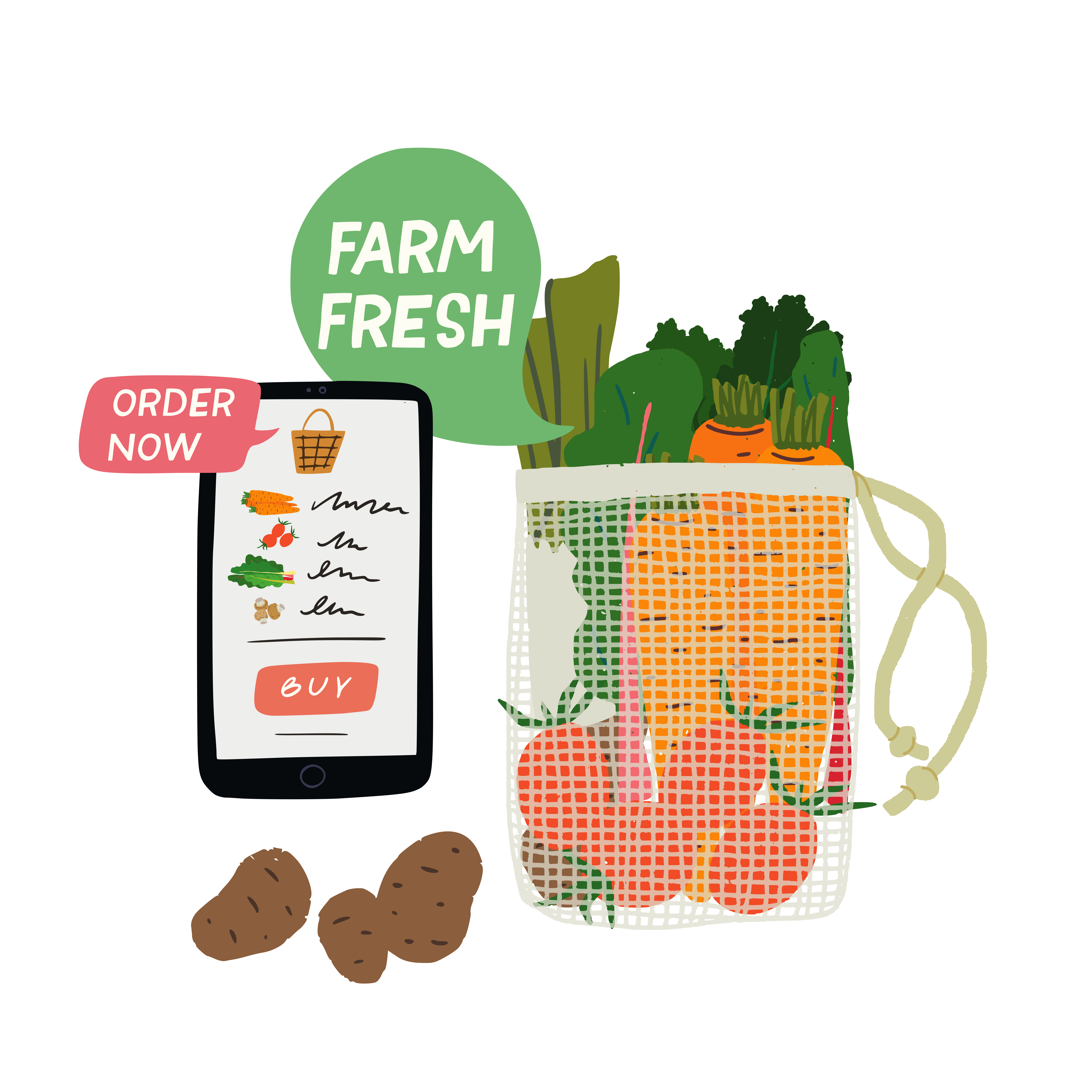Small spaces vary, but there is often the potential to grow quite serious amounts of food in them. I found I could grow far more than I initially thought possible, eating homegrown food every day. The revelation that I could grow a decent amount of (delicious) food was both exciting and motivating.
How much you’ll be able to grow depends on the size of your space and its microclimate, among other things. To increase yields in small spaces, there are also complex hydroponic towers and high-tech vertical walls available, but I’m drawn towards the less costly and more accessible technologies. In my experience these work well, are low cost and easy to look after.
Create a living soil and thriving ecosystem
Learn how to make good quality worm compost. Use wood chip or leaf mulches to protect the soil and provide food for microbial life. Add a layer of well-rotted, organic manure to the bottom of pots or as a mulch on the top. While it can be hard to create a balanced ecosystem in a small, urban space (slug predators, for example, are often lacking), do what you can to nurture life and diversity.
Vertical and ‘3D’ growing
Thinking of a growing area as a cube can help pinpoint new places to put plants and to make more of a space. Look up to see if higher areas offer new spaces to grow or better light. Growing ladders are simple genius, they enable four or five shelves of plants in a space where otherwise there would be space for only one. Shelves can be freestanding or fixed to walls to create new growing ledges or to raise plants up into more light. Climbers help make the most of vertical space and can reach up into sunnier areas, and hanging baskets are also a neat and cheerful way to fill empty vertical spaces, helping to create a 3D garden.

Catch crops and interplanting
‘Catch crops’ is a term for fast-growing crops like radish, pea shoots, spring onions or rocket, sown to make the most of temporary empty spaces. For example, three weeks before tomatoes are ready to plant out, grow a crop of pea shoots rather than leaving the pot empty. Or you can sow radishes around the edge of a courgette seedling.
Manure in the city
You might be surprised at what is possible to find in a city once you start looking. In London, I collected bags of well-rotted manure from the local city farm in my rucksack, and I filled my bike panniers with comfrey leaves and nettles when cycling along the river Lea, with wood chip from a community growing project and free green waste compost from a community garden.
This column was originally published in the spring print edition of Wicked Leeks. You can read the full magazine for free on Issuu.
The Vertical Veg Guide to Container Gardening by Mark Ridsdill Smith (£25, Chelsea Green Publishing) is out now.













0 Comments